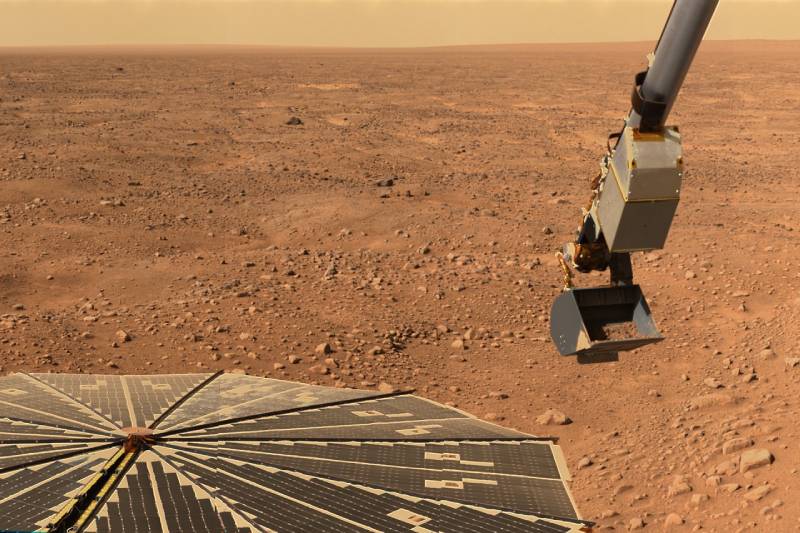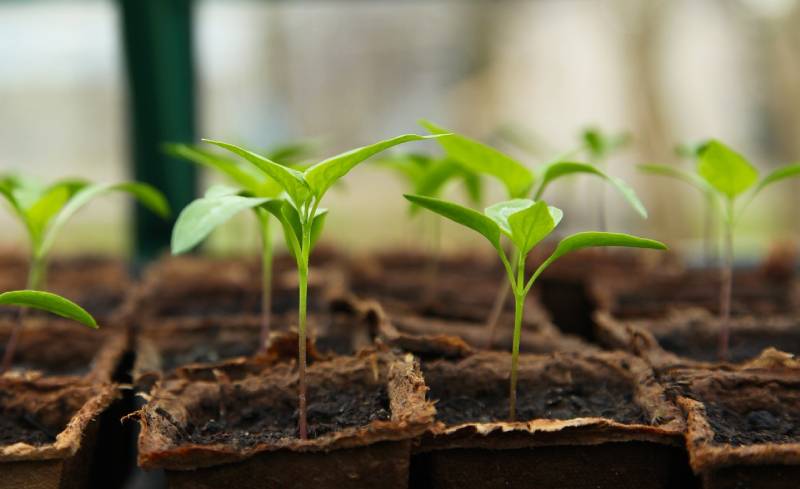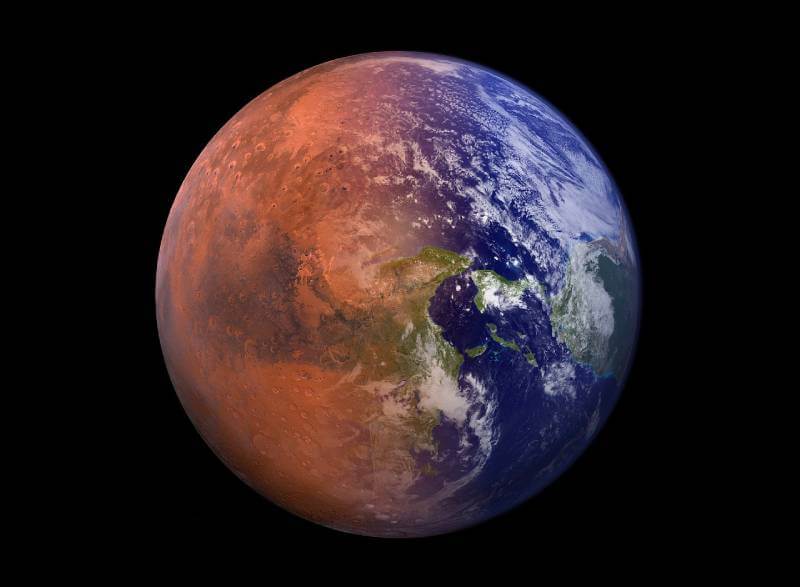Once everything is said and done, and all the researchers settle on whether it is viable for humans to live on Mars, the next big question will be figuring out how to sustain life. According to NASA experiments, it is confirmed that the soil on Mars is theoretically suitable for growing crops. Cultivating and growing crops is a major part of life sustenance on Mars. Some parts of Earth-like South America, Hawaii, and Antarctica, have been used to study the Martial environment since they have similar conditions.
What Are The Challenges On Mars?
Mars is sometimes romanticized and portrayed as a good place to live in science fiction. However, it is difficult and harsh for any life, even for tough Earth plants. The tough conditions on Mars, like cold temperatures that have developed over billions of years, need us to think creatively and use advanced technology to make farming possible.

Mars boasts an atmosphere of about 100 times compared to Earth’s. The atmosphere is primarily composed of carbon dioxide with traces of other gases, which means it provides very little protection against the unrelenting radiations of the sun. Unlike Earth, Mars does not have a robust magnetic field, which, on Earth, acts as a shield, trapping and deflecting harmful solar radiation. The Martian surfaces are subjected to intense solar radiation without the protective influence.
Can The Martian Soil Support Plant Growth?
Unlike Earth’s nutrient-rich soil, which has organic matter and provides a nurturing environment for plants, the Martian soil lacks these essential components. They grow well when soils are rich in nutrients like potassium, phosphorus, and nitrogen. The soil on Mars is referred to as regolith. The absence of organic matter in the Martian regolith means it lacks the microbial life and nutrients to support plant growth.

Contrary to the popular portrayal of Martian soil as sandy and reddish, it is unlikely to look like this image. In reality, the surface layer of Martian regolith is oxidized, causing the reddish hue. Nonetheless, beneath this thin oxidized layer, the soil would be expected to be grey. The bleak nature and absence of Martian regolith further reinforce the need for alternative agricultural methods.
Is Water Important for Growing Crops On Mars?
Water is an important factor in growing plants, not just on Earth but also on Mars. You must understand how water behaves in this challenging environment for successful farming on Martian soil. On Earth, we have various types of soils. Some, like sandy soil, don’t hold water effectively but quickly flow away. Others, like clay soil, can hold onto water well but keep it from going.
Nonetheless, plants can still get to the water if their roots are good at reaching it. The ideal soil to grow crops is called loam since it has the right mix of sand, silt, and clay. It holds onto water well but also efficiently releases to plant roots.
Interestingly, Martian soil stimulants used in experiments depict that they can hold water better than Earth’s soil. But is this crucial? One, it’s because water has to be present for plants to grow. On Earth, most plants rely on the moisture stored in the soil for their water needs. Therefore, the soil must hold onto water so plants can access it. Second, watering plants on Mars might need less water compared to Earth. This is because of the way water behaves in Martian soil, which is affected by the low gravity on Mars.
Mars is only about 38% of the gravity on Earth, meaning everything on Mars weighs much less than it does on Earth. So, the Martian soil holds onto water much more effectively due to this weaker gravity. Nutrients and water in the soil would also drain away more slowly on Mars than on Earth. In simpler words, the unique conditions on Mars mean that the soil can help plants get the water they require more effectively, potentially making it easier for plants to grow with less water.
Sustaining Farming With Greenhouses On Mars
While the conditions on Mars are inhospitable, scientists are developing and researching plant varieties that can withstand these challenges. One of the most promising ways is growing plants using controlled environments such as greenhouses, which can provide controlled humidity levels and temperature, protection from radiation, and a regulated and stable atmosphere suitable for plant growth.

To advance this idea, NASA’s Mars Science Laboratory mission has played a critical role in pushing the Martian Greenhouse idea. The Mars Environmental Dynamics Analyzer (MEDA) is an instrument in the Perseverance rover that collects data about the radiation levels, humidity, temperature, and weather levels, which helps design and optimize suitable greenhouses or plant growth habitats.
While this could offer a solution, greenhouses still require a source of water. Mars has water in the form of ice drops known to be salty. Nonetheless, researchers have proposed a solution to treat Martian saltwater with bacteria and filter it via volcanic rock, which can produce fresh water.
Which Plants Can Grow On Mars?
Researchers have carefully selected crops that survive in lunar and Martian soil conditions. These crops include Alfalfa, tomatoes, quinoa, lettuce, radishes, and turnips. Particularly, Alfalfa is promising as a fertilizer in the conditions.
It grows in volcanic soil similar to that on Mars without requiring additional fertilizers. While it’s not edible, it can provide essential nutrients by enriching the soil for other crops like lettuce, radishes, and turnips. These plants are chosen because they don’t demand excessive water, grow fast, and need minimal care.
Conclusion
In other experiments, simulated Martian regolith combined with the organic matter has yielded successful seeds and crops, which are important for the continuous crop cultivation on Mars – ensuring a sustainable food source for future missions and even human colonization. So, some plants can grow on Mars, but most would need to be grown in a controlled environment. While the challenges of Martian agriculture are numerous, these controlled environments, coupled with innovative solutions for nutrient and water management, are progressing to contribute to the solution for crop cultivation on Mars.

